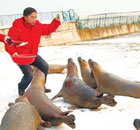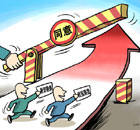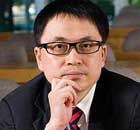Economy
Rocky road to recovery for China
By Xin Zhiming (China Daily)
Updated: 2010-01-12 08:18
 |
Large Medium Small |



While a sound growth is expected this year, uncertainties remain, such as possible serious inflation led by easy credit.
Inflation has been kept low so far, thanks to the crisis, which reduced overall demand. The country's consumer price index (CPI), the major gauge of inflation, lingered in negative territory from January last year until November, when it rose 0.6 percent.
However, the recent snow and icy weather in the north and central regions, which reminded people of the weather-triggered inflation spike in early 2008, has made many ordinary people worry about inflationary prospects.
Most of the economists and government officials are staying relaxed.
Although inflation may continue to rise, the "stable growth, low inflation" scenario may continue well into this year, analysts said.
Economists have said CPI could rise "very high" in some months this year, possibly in the second half, which would be a cause for concern. However, it is likely to be kept under 4 or even 3 percent for the year. It is widely expected the government will set a goal of 3 percent for CPI growth in 2010.
Ample liquidity has been behind the rising consumer inflation. China has initiated a series of economic stimulus measures since late 2008 and new yuan lending is estimated to have hit 9.5 trillion yuan ($1.4 trillion) by the end of last year, almost double that of 2008.
"There's too much liquidity in the system," said Ardo Hansson, lead economist for the World Bank in China.
But a prompt exit of the stimulus measures could bring another problem - an aborted economic recovery, as the authorities have repeatedly warned against the "unstable basis" for the country's economic recovery.
The stock market slump last Thursday was a result of investors worrying about an interest rate hike, analyst said.
China's central bank is expected to raise the rate by summer, but the unusual rise in the interest rate of the central bank bills last week ruffled investors. They interpreted it as a sign that an interest rate hike is in the pipeline.
Apart from a possible interest rate adjustment, China is expected to reduce new yuan lending by about 20 percent this year to prevent credit bubbles.
The move would make economic growth more sustainable and have no impact on recovery, since it is already a big sum compared with the amount in 2008, analysts said.
China issued a slew of new measures at the end of 2009 to cool down the real estate boom. It has also vowed to earmark more resources for such key sectors as environmental protection and new energy development, as well as those related to domestic demand stimulation.
"China must strike a balance between maintaining investment (as a means to boost growth) and price control. It's in a dilemma," said Zhang.
But from the long-term perspective, China must make a choice, added Chen Gong, chief economist for Anbound Consulting in Beijing.
China's fast urbanization has put increasing pressure on its environment, he said. Although economic growth is not a concern this or the coming years, there are many potential problems, such as environmental degradation, which require a change in the country's development mode.
"Otherwise, available resources won't be able to sustain such growth," he warned.















